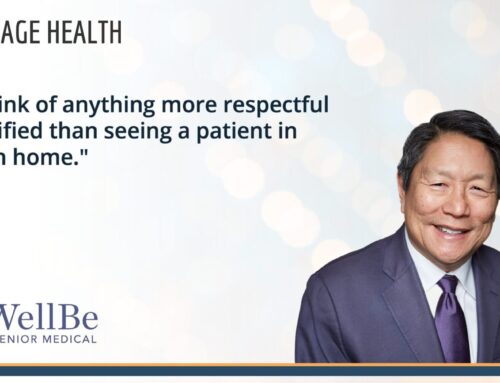Though our industry has seen a flood of innovations since the start of the COVID-19 pandemic, and no doubt will see more, old-fashioned human touch still plays a vital role in healthcare. By human touch we mean caring personal interaction with patients, whether or not it’s in-person. We also see its importance in COVID-19 vaccination programs. As public agencies struggle to get more of the U.S. population vaccinated, we’ve learned that media campaigns are less convincing than the support of respected community members.
In stimulating innovation, the pandemic has accelerated the evolution of value-based healthcare by giving rise to digital technologies that measure quality so that we can improve results. Human touch may be difficult to quantify, but we believe it has a clear and positive effect on outcomes. The innovative companies in the Leverage Health portfolio are onboard with this view.
“As the pandemic has shown us, digital transformation is very important in improving quality of care. However, any technology should augment rather than replace the personal interaction with a physician or other healthcare provider.”
—Roki Chauhan, MD, Senior Medical Advisor at Leverage Health
To be effective today, physicians must learn to make the most of technology. For instance, physical-medicine doctors forced to diagnose patients without being able to physically touch them can use phone apps that prompt patients to record the location, duration, and nature of their pain. The apps are helpful—not only to providers and their patients, but also to payers. Assuming patients use these apps, the digital information is all there. But the doctor must also master phone and online interactions, finding new ways to gauge balance and muscle strength, test reflexes, determine just where someone’s pain originates, and personally connect with the patient. In this sense, the pandemic has motivated not only technology companies to be more innovative, but doctors as well.
Zerigo, a Leverage Health portfolio company, offers a proven solution for self-treatment of mild to moderate psoriasis. A handheld UVB phototherapy device is shipped to the patient’s home and connected to their phone. Self-treatment is easy and much less expensive than drugs that cost tens of thousands of dollars. It’s also more convenient and, these days, safer than traveling to that rare dermatology clinic that offers lightbox therapy. Ongoing interaction with the prescribing physician, however, is essential to patient success. Throughout the course of treatment, patients can send pictures of their concerns and progress to their dermatologists. When people and doctors partner with one another, outcomes always improve.
As Life Moved Online
Even as the pandemic made us more acutely aware of our need for human contact, more of life and healthcare moved online. In 2020, regulatory agencies, including the Centers of Medicare and Medicaid Services (CMS), made changes that allowed for more remote healthcare. Because visiting doctors’ offices became impossible or less possible, conventional physicians began to be reimbursed for online and telemedicine. And because the pandemic has psychologically affected so many people, these same avenues have also been made available to behavioral health practitioners. (See our interview with mental-health leaders in the latest issue of Leverage Insights)
A 2021 industry report states that 81% of healthcare executives see that the pace of digital transformation for their organization is accelerating, and 93% report that their organization is innovating with an urgency and call to action this year. [1]

For younger people, using a smartphone to deposit a check or host a meeting on Zoom is now second nature. However, a significant number of people over 60 want to meet only in person or, when that’s not possible, to communicate via phone, and not a smart one. You can call a cab instead of using a transit app, but when it comes to healthcare, being technically challenged can have detrimental consequences for patients, providers, and health plans.
In 2016, 36% of the American population was 60 or over—that’s 68.7 million people.[2] But while the other two-thirds of Americans use smartphones, only 27% of those older adults do.[3] Nearly 50 million people over 60 don’t. Many of those seniors rely on adult children to help them navigate a healthcare system that is now grounded in digital technology—but not everyone has a tech-savvy family member to turn to. The country’s senior population is a big reason why, even in the digital age, human touch is relevant, and will likely remain so even when COVID-19 is truly behind us.
The Human Touch in Primary Care
A 2018 study published in the American Journal of Managed Care compared the impact of a high-touch primary-care model among a Medicare Advantage population with that of a standard practice-based model. Evidence presented in the study suggests that “a high-touch preventive model providing frequent and easy access to primary, specialty, pharmacy, and ancillary care can improve healthcare utilization and reduce healthcare costs in spite of higher frequency of outpatient visits in a senior population.”[4]
Though the report’s authors urged further comparison of the models, they cited three main reasons behind the improved outcomes they saw with high-touch care.
First, when patients and providers have closer, more trusting relationships, providers tend to prescribe more evidenced-based treatments, and patients tend to follow those recommendations. Second, when patients see their doctors more regularly, preventive-care outcomes improve. Third, patients better adhere to medication and vaccination schedules, and more often get preventive exams and screenings. All of this reduces costs, because the process makes possible earlier diagnoses and thus fewer hospital admissions.
But it’s not just older patients who benefit from the human touch. Other trends point to the same needs in younger populations. Consider the slow but sure growth of concierge and direct primary care (DPC) practices.

High-Touch Practice Models—Concierge and Direct Primary Care
Though they come at prices most people can’t afford, concierge and DPC practices give patients ongoing direct access to their primary-care physicians. Annual concierge fees of $1,500 to $2,500 are in addition to regular health-insurance premiums. DPC practices do not accept any kind of insurance, but can therefore boast greater pricing transparency—a plus. Monthly patient membership fees cover unlimited doctor visits.
Only about 12,000 of the country’s one million licensed healthcare professionals have adopted either model, but the number is increasing. Physicians, too, like high-touch practices, because they’re generally smaller and easier to administrate, and they provide guaranteed revenue.[5] And they like them for the same reason their patients do: they believe that better doctor-patient relationships are healthier—literally.
High-Touch Services—Health Advocates and Coaches
Healthy patients who set wellness goals generally embrace digital ecosystems. Medicare and Medicaid patients addressing chronic conditions won’t or can’t, on their own. Still, an active 30-year-old might hire a health coach to motivate them, and a diabetic 75-year-old might turn to an advocate to navigate online health applications and patient portals. They might need an advocate to interpret test results, or even to challenge a doctor’s recommendations. Innovative companies that understand the role human touch plays in healthcare are responding to these differing needs.
Personal Patient Outreach
According to CMS, in 2020 over 24 million people were enrolled in Medicare Advantage Plans in the U.S.6 We know that closing care gaps is the key to better outcomes for senior patients, and that closing those gaps begins with connecting with patients about their healthcare. Engaging with patients is always important, and with older populations, it’s essential to do so in a caring and personal way. One example of an organization that offers better healthcare for older patients is WellBe Senior Medical. This Leverage Health portfolio company works with Medicare Advantage plans to take full risk and then care for patients in the home or wherever the patient needs to go for care.
The world was far less populated and less complicated in the decades when seniors started their families and careers. Some doctors still made house calls, and personal reminders from receptionists about checkups or vaccines were not unusual. That’s why a service that reaches out to older patients with personal phone calls has a place in today’s world.
High-Touch Outreach in the Digital Age
Such an outreach service helps older at-risk patients schedule appointments with the right providers at the right time, and helps them follow providers’ recommendations—e.g., taking their medications as prescribed. Personal and proactive outreach agents schedule care before a condition has progressed or resulted in a health crisis. Patient outreach also can ensure that seniors experience better relationships with their physicians; this, too, leads to measurably better outcomes.
Payers and Member Outreach
It’s a partnership. Payers provide the data, and the outreach company simplifies the healthcare process and improves provider access for members uncomfortable with digital technology. Working with outreach programs lets payers close Healthcare Effectiveness Data & Information Set (HEDIS) gaps, improves CMS Star Ratings, and increases ROIs. As members can take better advantage of their benefits, these health plans ultimately gain prestige.
Customizable Programs
For most payers, relying on an in-house department to reach out to older and/or at-risk members proves challenging and ineffective. Payers see much better results when they employ an outreach company with proprietary technology tailored to their needs and agents who skillfully connect with plan members using tried-and-true scripts. The best outreach programs will also gather overlooked or previously unknown data and share them with health plans and network providers, creating a valuable feedback loop.
Staying on top of their healthcare can be confounding for older Americans. At worst, their health suffers; at best, the many extras that health plans offer—so that members can advocate for themselves—miss the mark. Plans and providers know they need to look forward, and online practices, telemedicine, and digital quality measurement are the ways of the future.







Stay In Touch